
Click to continue reading more on this update to the 2012 IRC.
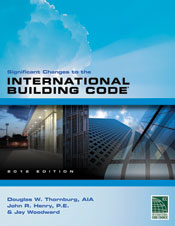

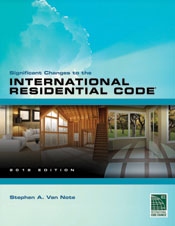

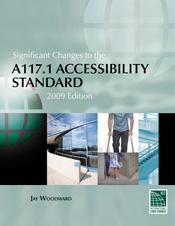
 |
||||||||||
| CODE UPDATE | ||||||||||
| Significant Code Changes to the 2012 International Residential Code | ||||||||||
| (The information below is excerpted from the Significant Changes to the 2012 International Codes series.) | ||||||||||
| Braced wall line end conditions for continuous sheathing have been placed in one section. A fifth end condition is defined for braced wall panel connections. When a 48-inch braced wall panel is at the end of a wall line, the intersecting wall line does not require a return panel or hold-down at the corner. Click to continue reading more on this update to the 2012 IRC. |
||||||||||
| The Significant Changes to the 2012 International Codes series has been developed by the International Code Council and published by Cengage Learning to assist code officials, architects, engineers and other construction professionals transitioning from the 2009 to the 2012 editions of the International Codes. The series offers a comprehensive yet practical analysis of hundreds of the most critical changes from a very active code development cycle. Each color publication contains: revised code text; a summary of each change listed; in-depth change analysis; and a detailed photo, illustration or table for each change to deepen understanding. Coverage reflects provisions with special significance, including new and innovative design ideas and technologies, modern materials and methods of construction, and current approaches to safety and stability. Authored by ICC code experts, these useful tools are "must-have" guides to the many important changes in the 2012 International Codes. | ||||||||||
 |
 |
 |
 |
 |
||||||
| CODE BASICS |
| Fire, Based on the 2009 International Fire Code |
| (The information below is excerpted from the 2009 Building Code Basics series.) |
| A fire department connection (FDC) is required for most NFPA 13 and 13R automatic sprinkler systems and standpipe systems. They are not required for automatic sprinkler systems protecting one- and two-family dwellings and townhomes. Fire apparatus can connect supply hoses to the FDC to pump additional water into sprinkler or standpipe systems. The piping arrangement between the FDC and the sprinkler riser depends on the type of automatic sprinkler system.
Click to continue reading more on this excerpt from the Building Code Basics: Fire, Based on the 2009 IFC. |
| The Building Code Basics series based on the 2009 International Building, Residential and Fire Codes and 2012 Building, Residential and Green Construction Codes explains requirements using non-code language to help you understand the material or explain it to others. Technically accurate and easy to understand, these are the perfect resources for builders, owners, students, plan reviewers, inspectors and permit technicians. Each book contains: 150-plus color diagrams and photos that help readers visualize correct code application; numerous real-world examples; content that pulls together related information from various code sections into one convenient location; and a glossary of code and construction terms to clarify key terminology as it applies to the code. |
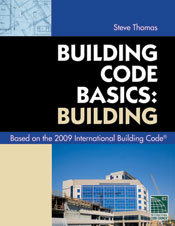 |
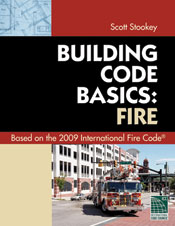 |
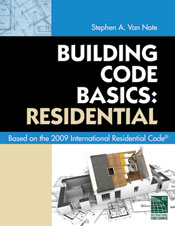 |
||||
 |
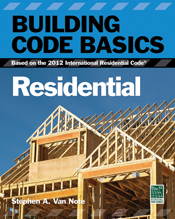 |
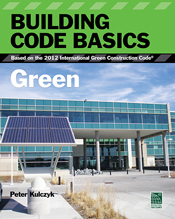 |
| CODE Q&A |
| 2009 International Residential Code — Plumbing, Mechanical and Fuel Gas Provisions |
| (The information below is excerpted from the 2009 International Codes Q&A series.) |
| A question about Section G2407.6, outdoor combustion air and sizing of pipe is raised and answered: Q: How do I determine whether a pipe serving a combustion air system is horizontal or vertical for calculating the appropriate size of outdoor combustion air ducts? For example, if the horizontal duct enters the building through the wall or rim joist but elbows down and continues vertically to the appliance enclosure, what is the proper method for sizing the ducts? Click to get an answer to this code question and to continue reading more on this excerpt from the 2009 IRC: Q&A. |
| Get expert answers to hundreds of the most frequently asked real-world questions. The 2009 Q&A series will assist engineers, architects, inspectors, fire and building officials, and plans examiners with finding answers to common code questions that arise during design, plan review, construction and daily code enforcement. Features: many new questions and answers; detailed photos, tables and illustrations that provide a clear understanding of both the intent and meaning of the code text; the relevant code section printed before the question and answer for easy reference; and discussion on a wide variety of topics including: accessibility, fire resistive construction, means of egress, building planning, foundations, fire protection systems, hazardous materials, plumbing and mechanical systems, prescriptive compliance method, determination of substantial damage, and much more. |
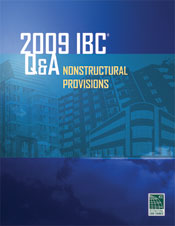 |
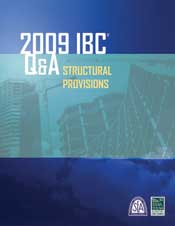 |
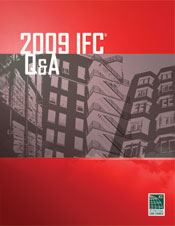 |
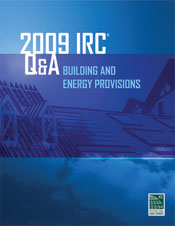 |
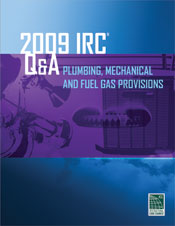 |
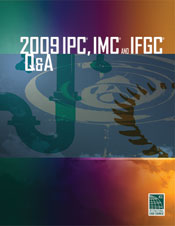 |
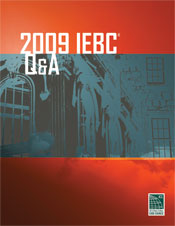 |
 |